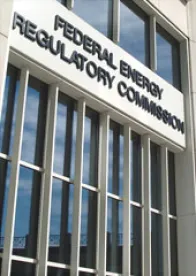Under the Natural Gas Act (NGA), FERC certificates the construction and operation of pipelines to transport natural gas in interstate commerce if they are “required by the present or future public convenience and necessity.” For almost two decades, FERC has used a 1999 policy statement’s guidelines to evaluate whether new pipelines meet that statutory standard. The use of natural gas has been steadily growing, and in 2017 FERC certificated over 2,700 miles of new interstate pipelines, the highest annual level in history.
Now FERC is conducting a top-to-bottom review of the 1999 guidelines and issued a Notice of Inquiry (NOI) requesting public comments on whether and how they should be revised. The outcome of FERC’s review could have a significant impact on the development and transportation of shale gas, and the availability of new pipeline capacity to serve increasing demand from gas-fired electricity generators and LNG export facilities.
The 1999 policy statement
The policy statement sets out the analytical steps the Commission takes in evaluating a new pipeline application. If the applicant has existing pipeline customers, the threshold issue is that the project must be able to proceed without subsidies from those customers. This usually means that the project would be incrementally priced.
FERC then conducts what it calls an “economic test” by balancing evidence of the new pipeline’s public benefits against its adverse effects. FERC determines whether there are any adverse effects on (1) the existing customers of the pipeline proposing the project, (2) existing pipelines in the market and their captive customers, or (3) landowners and communities affected by the new pipeline’s route. If there are, the Commission may identify conditions that it could impose on the certificate that would minimize or eliminate the adverse impacts.
Where there are residual adverse impacts, an applicant must show a project’s public benefits that are proportional to the project’s adverse impacts. Examples of public benefits are meeting unserved demand, eliminating bottlenecks, access to new supplies, lower costs to consumers, providing new interconnects that improve the interstate grid, providing competitive alternatives, increasing electric reliability, or advancing clean air objectives.
Applying the guidelines to certificate applications over the years, FERC has shown flexibility. For example, the NOI notes that as evidence of unserved demand, applicants have most often presented precedent agreements with prospective customers for long-term firm service, and the Commission has accepted those customer commitments as the principal factor in demonstrating project need.
A pipeline application for certification also triggers environmental review under the National Environmental Policy Act (NEPA). FERC’s review addresses impacts on various environmental resources, including geology, soils, groundwater, surface water, wetlands, aquatic resources, vegetation, wildlife, special status species, cultural resources, land use, recreation, aesthetics, socioeconomics, air quality, climate change, noise, and reliability and safety.
Because the NEPA review typically takes longer than the review of the non-environmental aspects of a proposed project, FERC often initiates its study of environmental impacts at the applicant’s request during the pre-filing stage. Coordinating with other agencies whose approval is required and ensuring that their concerns and those of stakeholders are adequately addressed can extend the time needed to complete the NEPA review process.
The NOI observes that over the past decade there has been a marked increase in the involvement of federally recognized tribes, affected landowners, and environmental organizations in proposed natural gas project proceedings. Their concerns have primarily focused on the need for new projects, alternatives, cumulative impacts, and the effects related to the production and consumption of natural gas, particularly the contribution of GHG emissions to global climate change.
The NOI
The NOI notes that in the 19 years since the policy statement was issued, there has been unprecedented change in the dynamics of the natural gas market. Among the changes are: (1) a revolution in natural gas production technology leading to dramatic increases in production and areas of production; (2) customers routinely committing to long-term precedent agreements for firm service during the formative stage of projects; (3) increased use of natural gas for electric generation; (4) increased concerns of landowners and communities potentially affected by proposed projects; and (5) increased interest in environmental impacts.
FERC wants comments on potential modifications to its approach for determining whether a proposed project is required by the public convenience and necessity, and has identified four general areas of examination:
Reliance on precedent agreements to demonstrate need for a proposed project. Recent changes in the gas industry whereby producers are contracting for increasing amounts of pipeline capacity, as well as an increasing number of shippers affiliated with pipeline companies, have raised questions as to whether precedent agreements remain an appropriate indicator of need and whether FERC should examine additional information in evaluating the need for proposed pipelines.
Potential exercise of eminent domain and landowner interests. After FERC authorizes a project, the project sponsor can assert the right of eminent domain for outstanding lands it could not acquire through a negotiated easement. Should FERC consider adjusting its consideration of the potential exercise of eminent domain in reviewing project applications, and if so, how?
Evaluation of alternatives and environmental effects under NEPA and the NGA. There has been increased stakeholder interest regarding the alternatives to a project that the Commission evaluates in its public interest determination, how the FERC addresses climate change, and the evolving science behind GHG emissions and climate change.
Efficiency and effectiveness of the Commission’s certificate processes. FERC wants to improve the transparency, timing, and predictability of its certification process.
With respect to each of these areas, the NOI asks specific questions for commenters to address. Comments on the NOI are due June 25, 2018.





 />i
/>i


